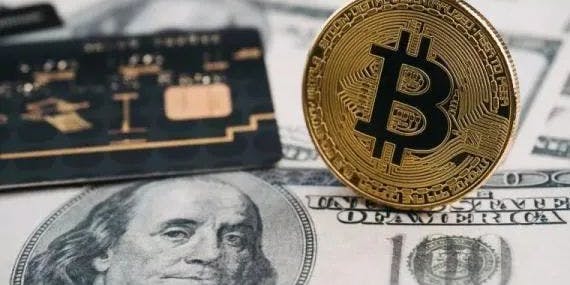
Friend.Tech: New Approach to Web3 Social or a Flash in the Pan?
The previously discussed Base by the veDAO Research Institute has recently sparked a new hot topic: a SocialFi DApp called Friend.Tech. Since the establishment of Base, a total of $175 million in cryptocurrency has been transferred to the platform, with nearly 580,000 transactions recorded on August 10. On the same day, the number of daily active users on Base reached a historic high of 136,000. And all of this is mainly attributed to Friend.Tech, an invite-only native Web3 social DApp on Base.

The revenue exceeded $500,000 within two days of launch. With a "one-for-three" invitation code mechanism similar to Clubhouse, Friend.Tech has become the hottest Socialfi project in the Base ecosystem and one of the most highly anticipated Web3 projects. According to CryptoKoryo data panel, as of 8:30 pm on August 19, within about 10 days of its birth, friend tech's trading volume has exceeded 11,000 ETH, with over 39,000 independent users and a cumulative total of over 518,000 transactions. The Paradigm effect is also strong. After the financing news was announced, the active users of friend tech grew rapidly, with over 1.7k buyers in a single hour, setting a new record. In this article, let's learn more about Friend.Tech together.
What is Friend.Tech?

The elusive Friend.Tech is a DApp based on the Base ecosystem, allowing users to buy and sell "shares" of any user on Friend.tech through the Ethereum of the Base chain, which is strongly linked to Twitter. Investors in KOL shares will gain the right to interact directly with the KOL. It allows users to buy and sell shares of related Twitter accounts, and owning a share of a KOL will authorize the user to enter the KOL's private chat room.
The essence of Friend.Tech is to bet on the influence of KOLs, it is a project that tokenizes KOLs. Essentially, Friend.tech issues tokens for KOLs, which are tokens for personal IPs; in this way, the value of KOLs is monetized, and it can also be considered as an attempt to quantify social value.
According to Dune Analytics data, Friend.Tech brought in 7,860 users and 4,400 ETH (8.1 million USD) in less than 24 hours after the launch of the test version, far exceeding the trading volume of OpenSea during the same period; on August 10, it even set a new high for the number of daily active users on Base. Friend.Tech broke through 1.8 million accounts in four days of launch, with a weekly trading volume of 6,900 ETH, and the royalty income from Shares exceeded 300 ETH.
Background of Friend.Tech
Racer is one of the creators of Friend.tech. He previously created TweetDAO, a DAO organization that grants the right to use his Twitter account by holding an NFT called "TweetDAO Egg".
Later, Racer and another co-founder of Friend.tech, Shrimp, created Stealcam, a picture sharing application based on the Arbitrum ecosystem. In Stealcam, users can upload pictures, which will be pixelated and require other users to "steal" (open) to view the original picture, with the price increasing each time it is stolen according to the rules. This design combines curiosity, celebrity effect, Twitter dissemination, and owner economic model, making the project itself highly self-propagating.
Finally, the developers decided to reshape the positioning of Stealcam and created a project called Friend.tech. Shrimp and Racer originally planned to deploy the project on Arbitrum, but perhaps due to market popularity, they ultimately chose Base; thus, the blazing Friend.tech of today was born. Friend.tech goes further than previous products, tightly integrating social attributes and cryptocurrency. In this way, KOLs and ordinary users on Twitter can build social tokens to monetize.
How does Friend.tech work?
Every user registered on Friend.tech needs to link their account with Twitter. In this way, a user's Twitter account on Friend.tech is quantified as a social token, and other users can purchase shares of these tokens with ETH, representing the popularity and equity of the user on Twitter.
Similar to other digital assets, the value of these shares fluctuates. Suppose you purchase shares of a user at a certain price, and then the base price of their shares increases shortly after. You can choose to sell your shares at a higher base price, potentially making a profit. Conversely, if the base price is lower than the purchase price, you can choose to hold or sell at a loss. All transactions are recorded and can be viewed on the chain. Whether buying or selling, each transaction will incur an additional 10% fee: 5% goes to the protocol, and the other 5% goes to the holder of the shares being traded.
@functi0nZer0 tweeted about the pricing model of Friend.tech shares on Twitter (the model has not been officially confirmed), revealing a simple supply-demand structure. The quantity of shares held by individuals determines the price of the next share in a quadratic relationship, with the formula: Price in ETH = Supply ^ 2 / 16000. *Where Supply represents the current quantity of shares held by individuals. Incentives are an important means for friend tech to transform Twitter users into core users of the application, using potential token airdrops and equipped with tangible points to incentivize users. Friend.tech distributed a total of 100 million points during the 6-month testing period, with distributions every five weeks, and the points are not recorded on the chain. On August 19, friend tech completed its first points airdrop.
How to use Friend.Tech
1. Access the platform

First, open the friend.tech website on your mobile browser. After entering the website, click the "Share" button on the browser menu, then select the "Add to Home Screen" option. Then open the friend.tech app on your mobile home screen.
2. Register and enter the invitation code
-
After opening friend.tech, register (can log in through Google or App Store). After registration, users need to enter an invitation code to gain full access. Users usually receive three invitation codes, which they can share with others.
-
Set up your account

After entering the invitation code, users need to link their Twitter account and send 0.01 ETH based on Coinbase's Base chain to activate their account. You can go to the official Base cross-chain bridge, connect your wallet, and transfer your mainnet ETH to the Base chain. Once you have ETH on the Base chain in your account, you can claim your three invitation codes.
3. Purchase shares and chat
-
After entering the app, you can see the current most popular users on the homepage and purchase their shares. You can also search for users you are interested in and purchase their shares. Before purchasing, clicking on a user will show a locked icon in the chat interface, indicating that you need to purchase shares. After the purchase is completed, you can engage in one-on-one chat. To prevent spam, Friend.tech allows each holder to send three messages, then wait for a reply and reset the limit.
-
Withdrawal

If you have successfully earned money and wish to withdraw funds, click on your profile within the app and withdraw your ETH to your own address. Use the Base cross-chain bridge to transfer your funds back to the mainnet for further use or trading.
Issues to be aware of

Despite experiencing exponential growth within the first 24 hours since its launch, with many crypto KOLs starting to profit, and its popularity and discussions remaining high, some people have expressed concerns about the platform's pricing model and data privacy.
The PC-side website of Friend.tech still guides users to download the app on mobile devices. The information about the project on this single-page website is very limited, lacking common information about Web3 projects such as a roadmap, founders, or whitepaper, and the privacy policy link displayed on the page also shows "Coming soon!" when clicked.
Additionally, the user experience of Friend.tech is not very friendly. On the first day, the app experienced network failures due to the influx of users, and more and more KOLs registered on the platform, with many users complaining about delays and app crashes. In fact, rather than being a new type of social product, Friend.tech is more like a variant of NFT gameplay, and the logic behind it is actually the logic of holding NFTs: users choose to hold shares if they believe in a KOL, think the KOL's views are helpful, or if the KOL's community is active and their shares are expected to rise in the future. But this means that selecting high-quality KOLs becomes the most critical decision-making process for users. Just as innumerable NFT products on Ordinals, users in Friend.tech first need to know which accounts on Twitter are active and which accounts can easily build a community, which requires users to analyze the reading volume of Twitter KOL tweets in advance. It is worth noting that currently, Friend.tech is mostly dominated by European and American KOLs, and Chinese KOLs are relatively weak. After simple screening, selecting the targets of high-quality KOLs, users also need to distinguish which KOLs are willing to operate Friend.tech for the long term, and which KOLs are just here for the excitement and will leave. Overall, Friend.tech indirectly assigns a cost to users' attention. If you want to obtain more high-quality information, it means you need to invest equivalent assets. However, each user's attention is limited, and excessive attention can lead to biased industry judgments. Therefore, Friend.tech itself has a limit on user attention, which in a way has become a factor in the development of the product itself.
Conclusion
The SocialFi track has always been continuously watched by the crypto world, but so far, there has not been a leading project. Whether the popularity of Friend.tech can bring back the concept of "Web3 social" and related projects, and whether Friend.tech will be a flash in the pan or achieve long-term success, remains to be seen. Like any Web3 innovation, the future of Friend.tech will depend on its adaptability, development, and its ability to continuously provide value to users. The delicate balance between social interaction and investment potential may play an important role in determining its lifespan.
Reference: The price function speculated by @functi0nZer0:
https://docs.google.com/spreadsheets/d/1AW6by8ZXqD1vV3z4TfC8N7SZwt8RD-lFT-G9_hGMdPk/edit#gid=0
Follow Us
veDAO is a decentralized investment and financing platform led by DAO, committed to discovering the most valuable information in the industry, and enthusiastic about exploring the underlying logic and cutting-edge tracks of the digital encryption field, allowing every role within the organization to fulfill their responsibilities and receive rewards.
Website: http://www.vedao.com/
Twitter: https://twitter.com/vedao_official
Facebook: bit.ly/3jmSJwN
Telegram: t.me/veDAO_zh
Discord: https://discord.gg/NEmEyrWfjV
🔴Investment carries risks, the project is for reference only, please bear the risks on your own🔴



